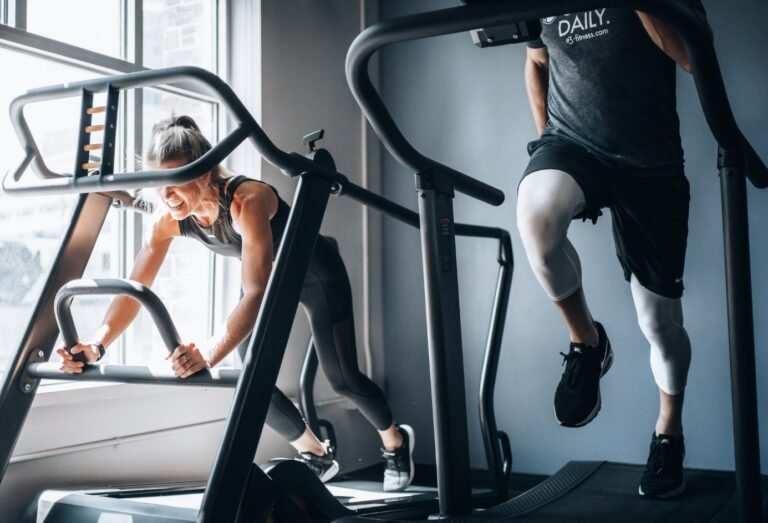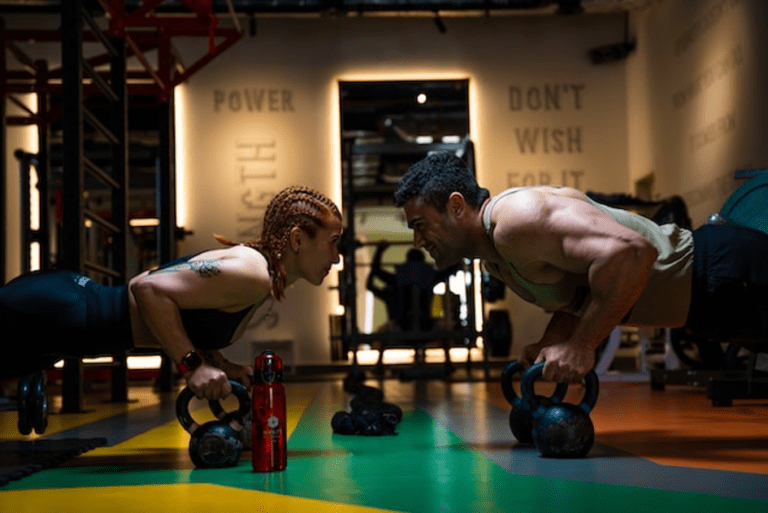How to improve grip strength with simple exercises from a trainer
Whether you’re holding on to your dog’s leash for your life or trying to open that pickle jar, there’s one term you should be familiar with: grip strength! Grip strength has a place both in real life and in the gym, where it helps you carry weights and hold the bar with confidence without feeling as much wrist strain or pain.
This is just the beginning of the benefits of grip training. “Good grip strength helps you focus on proper form and mechanics, which means you can push yourself to the necessary level of fatigue,” says Kat Ellis, CSCS, trainer at The Fort in New York City. So if you’re lifting so much weight that the weight slows you down for the last few reps, you’ll have more control as you move forward, making the movements much more effective at training your muscles.
And yes, researchers agree. Hand grip strength can be a good indicator of muscular endurance and overall strength, according to a study in the Journal of Clinical and Diagnostic Research. It’s also an indicator of overall health and well-being in older adults, meaning it becomes even more important to maintain as we age.
Beyond fitness, grip strength is linked to the risk of cardiovascular disease and death. “Grip strength is important for maintaining mobility and independence in old age,” says Angela Gargano, CPT.“It helps open glasses, load Groce,ries, and turn doorknobs, many things we take for granted. A person with a strong grip is likely to have a lower risk of chronic diseases, such as heart disease and diabetes, as well as better overall physical condition. “Function.”
Now that you know how important grip strength is to your overall well-being now and in the future, read on to learn everything you need to know about strengthening your grip to reap its full benefits at home and in the gym.


-
What exactly is grip strength?
Put simply, grip strength is how well you can hold something with your hands, says Gargan o. It’s a measure of how much force or power you can generate using your forearm and hand muscles.
A strong grip is a good indicator of overall and upper body strength because you need to be able to hold weights to build muscle strength. However, hand and wrist muscle weakness are all too common, according to Liana Tobin, CSCS, a personal trainer instructor for the National Strength and Conditioning Association. “When you’re doing a serious strength workout, grip strength is often the first thing that goes wrong,” she says. “That’s because
smaller muscles are engaged, which tire quickly, and typically exercise less frequently. All the more reason to spend time training hand and forearm strength if you haven’t already.
Take pull-ups, for example. “Let’s say you have very strong lats and a strong core that theoretically allows you to stand up easily,” says Mike Simone, CPT, founder of humanfitproject. “If your grip is weak, you can’t do as many reps when you can do one because your grip is failing before those other muscles.”
The same goes for the deadlift, he says, which is such a great lower-body strengthening that it’s a shame you’re not getting the maximum benefit from it. “You could lift a lot more weight, but if you have a weak grip you can’t fail your working back muscles.”


-
Kinds of grip strength
When it comes to your grip, there are three unique types of strength. Here Simone breaks them down:
Crush: Curving your fingers in your palm is your crush power.
Think: of crushing a ball of paper in your hands or shaking someone’s hand.
Pinch: This one is pretty self-explanatory: It’s the force between your fingers and thumb as if pinching yourself.
Support: In your ability to hold on to something for a long period, e.g. Hanging from a pull-up bar or carrying groceries, for example, is all about support.
-
Benefits of grip size
Toning those tiny muscles is also beneficial outside of the gym. Here are five benefits of a strong grip, according to Ellis.
-
May help prevent tendonitis.
- You reduce your chance of getting carpal tunnel syndrome.
- There is a reduced risk of developing arthritis.
- You improve your fine motor skills. This makes everyday things like putting on your bra, throwing, or catching a ball easier. (Cornhole, anyone?)
- You get stronger at the gym because you can lift heavier weights.
-
Signs that you should train your grip strength
- Has trouble carrying shopping bags without putting them down.
- You keep dropping dumbbells or barbells.
- He often gets cramps in his hands.
- You feel pain in your hands when you lift heavy weights.
- Hands and forearms get tired from shoveling snow or walking the dog.
- You’re tired of typing on your keyboard.
Answering yes to any or all of the above questions is a strong indicator that you could improve your grip strength. For more quantitative information about your grip strength, Gargano recommends a dynamometer grip strength measurement. This handheld device provides you with specific statistics and a comparison table.”You can gauge your grip energy and universal fitness simply through urgent on it,” she says.
The good news is: Managing the situation better is not difficult or time-consuming. How to enhance grip power at homeYou don’t need dumbbells to work on grip strength. Just grab these household items to take full advantage.
-
Best grip strength exercises for the gym
- Pawn carry :
Procedure:
- Hold a heavy kettlebell in a single hand, fingers down at your sides. (Option to wrap a towel around the handle and hold it by the towel for extra challenges.)
- Walk forward in a straight line without your weight hitting the side of your leg. maintain for 30 to 60 seconds. Rest for 30 to 60 seconds and then repeat.
- Do three to five sets.
-
Suitcase deadlift :
Procedure:
- Hold a dumbbell in your left hand, feet shoulder-width apart, and your right hand in a fist.
- Keeping your abs tight and your knees soft, roll your hips back to slowly lower the weight until it reaches the middle of your left shin. The back should be parallel to the floor.
- Pushing through heels and tightening abs, quickly return to start. Squeeze your glutes once they are fully erect. This is a repeat. Do 3 or 4 units of 10 to twelve reps.
-
Hammerlock :
Procedure:
- Stand with your feet hip-width apart and hold a pair of dumbbells by your sides. Palms should face in, back straight, and chest up.
- Without moving your upper arms, bend your elbows and curl the dumbbells toward your shoulders.
- Slowly lower the dumbbells to the starting position in a controlled manner. That’s 1 rep. Do 3 to 4 units of 12 reps.
-
Sheet metal clamp :
Procedure:
- Choose two weight plates of the same size.
- Grasp one in each hand between thumb and fingers, arms at sides.
- Squeeze the plates together as firmly as possible and hold for one minute. Rest for 30 to 60 seconds.
- Do two or three sets.
-
Throw with assisted ribbon :
Procedure:
- Wrap the resistance band around the bar and tuck the loose end under one foot. Stack the other foot on top.
- Passively hang from the bar, then engage your core, lats, and glutes for a full pull-up.







